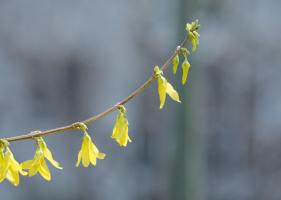Introduction
Flowering plants are a diverse group of plants that not only beautify our surroundings but also provide essential nutrients to living beings. They are found in almost every part of the world, and their ability to adapt to different environments is remarkable. However, the question arises, can flowering plants survive in saltwater? In this article, we will explore this topic in detail.
What are halophytes?
Halophytes are plants that have adapted to grow in saline conditions, such as salt marshes, coastal regions, and deserts. They have unique mechanisms that allow them to tolerate high salt concentrations in the soil and water. These plants are crucial as they help in stabilizing the soil, preventing coastal erosion, and creating habitats for marine life. However, not all halophytes are flowering plants.
Examples of flowering halophytes
There are numerous species of flowering halophytes that have been identified to date. Some of them are:
Salicornia Europaea: This plant is also known as the European Glasswort and is commonly found in coastal regions of Europe. It has succulent stems and leaves that store water and nutrients, allowing it to survive in salty conditions. It produces small, greenish-yellow flowers.
Atriplex Hymenelytra: This plant is native to the deserts of North America and can tolerate extreme drought and high levels of salt. It has grayish-green leaves and produces greenish-yellow flowers that are clustered in spikes.
Seashore Mallow: This plant is found along the coasts of the United States and is characterized by its pinkish-purple flowers. It is well adapted to grow in sandy, salty conditions and is commonly used for coastal erosion control.
Limitations to flowering plants in saltwater
Despite the existence of flowering halophytes, the number of flowering plants that can grow in salt water is limited. The high concentration of salt in the water can have detrimental effects on the plant's growth and survival. It can affect the plant's ability to absorb nutrients and water, leading to reduced photosynthesis and slower growth rates. Additionally, saltwater is associated with high osmotic pressure, which can cause dehydration and ion toxicity in the plant.
Conclusion
While there are examples of flowering plants that can grow in salt water, the number is relatively small compared to the vast variety of flowering plants found in freshwater or terrestrial environments. The limitations of saltwater on plant growth and survival make it a challenging environment for plants, and the mechanisms that allow halophytes to thrive in these conditions are still being studied. Nevertheless, these plants are essential in maintaining the ecological balance in coastal regions and deserve our attention and appreciation.

 how many times do yo...
how many times do yo... how many planted tre...
how many planted tre... how many pine trees ...
how many pine trees ... how many pecan trees...
how many pecan trees... how many plants comp...
how many plants comp... how many plants can ...
how many plants can ... how many plants and ...
how many plants and ... how many pepper plan...
how many pepper plan...
































